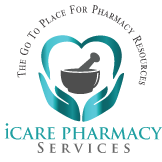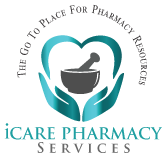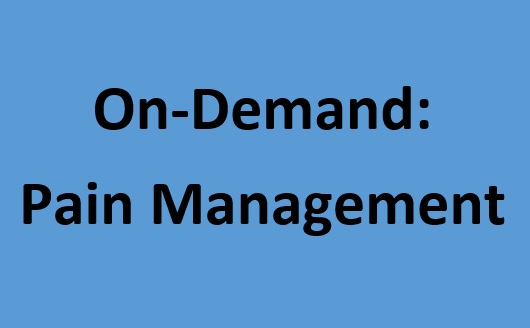Description
On-Demand Pain Management CE (12 hrs.)
Scratching the Surface: A Review of Pain Pathophysiology and Pharmacology Satya Yaramati, PharmD, PGY2 Pain & Palliative Care Pharmacy Resident, UF Health Jacksonville Upon completion of this activity, pharmacists will be able to: Describe the pathophysiology of nociceptive, neuropathic, and central pain; Collect a detailed pain history and appropriately assess a patient’s pain; Summarize the indications, mechanism of action, dosing, side effects and clinical pearls for various agents used to treat pain; Identify opportunities for intervention regarding pharmacologic pain management therapy. UAN: 0675-0000-25-001-L08-P Upon completion of this activity, technicians will be able to: Describe the various types of pain; Summarize the indications and side effect profile of different pain agents; Recognize opportunities for intervention regarding pain management therapy. UAN: 0675-0000-25-001-L08-T Recognizing the Danger Zone: Strategies and Considerations in Adjusting Pain Management Treatment Regimens in Chronic Pain Management Robin Moorman Li, PharmD, BCACP, NBC-HWC, Assistant Director Jacksonville Campus, Clinical Associate Professor, University of Florida, College of Pharmacy Upon completion of this activity, pharmacists will be able to: Outline common steps to create a comprehensive pain management plan; Describe reasons why commonly used analgesic regimens must be adjusted due to patient related and agent related variables; Recommend adjustments to pain management treatment regimens in organ dysfunction; Demonstrate a stepwise approach for opioid conversions; List important patient education points on opioid conversions and proper use of breakthrough pain medications. UAN: 0675-0000-25-002-L08-P* Upon completion of this activity, technicians will be able to: Recognize a comprehensive pain management plan; Identify reasons why commonly used analgesic regimens must be adjusted due to patient related and agent related variables; Calculate dose conversions of certain opioids; List important patient education points on opioid conversions. UAN: 675-0000-25-002-L08-T* A Novel Approach: Preventing & Treating Chronic Pain Due to Obesity in the Healthcare Setting Matthew Hermenau, PharmD, CPT, NBC-HWC, Inpatient Pain Stewardship Clinical Pharmacist, Jackson Memorial Hospital Upon completion of this activity, pharmacists will be able to: Explain the rising correlation between degenerative joint disease, obesity, and chronic pain in the United States; Compare the current pitfalls of the healthcare model for chronic pain due to obesity, and introduce a new hybrid model of inpatient and outpatient management; Identify non-pharmacologic ways to combat the obesity crisis and subsequent chronic pain UAN: 0675-0000-25-003-L08-P Upon completion of this activity, technicians will be able to: Explain the correlation between degenerative joint disease, obesity, and chronic pain in the United States; Compare the current pitfalls of the healthcare model for chronic pain due to obesity; Recognize non-pharmacologic ways to combat the obesity crisis and subsequent chronic pain. UAN: 0675-0000-25-003-L08-T Managing Pain in Multiple Sclerosis Lillian Smith, PharmD, MDA, CPh Associate Professor of Pharmacy Practice, FAMU College of Pharmacy Upon completion of this activity, pharmacists will be able to: Define Multiple Sclerosis (MS) and its current impact within the United States; Provide an overview of the risk factors and pathophysiology associated with MS; Identify the potential genetic, environmental, and infectious factors that may causes the disease state; Distinguish between the primary, secondary, and tertiary symptoms caused by multiple sclerosis; Discuss the criterion and physical assessment involved in concluding the diagnosis of MS; Categorize the four types of multiple sclerosis while understanding the differences and similarities between them; Outline both non-pharmacological and pharmacological interventions currently available for the treatment of the disease; Illustrate health disparities and barriers to care MS patients currently experience in maintaining the condition; Describe the role of all involved in the management of MS while outlining potential resources utilized for additional support. 0675-0000-25-004-L01-P* Upon completion of this activity, technicians will be able to: Define Multiple Sclerosis (MS); Provide an overview of the risk factors and symptoms associated with MS; Compare and contrast between the primary, secondary, and tertiary symptoms caused by multiple sclerosis; Categorize the four types of multiple sclerosis; Outline both non-pharmacological and pharmacological interventions currently available for the treatment of the disease. UAN: 675-0000-25-004-L01-T* Validation and Counseling of Prescriptions for Controlled Substance & Opioids Joseph Cammilleri, PharmD, BCACP, CPE, Ambulatory Care Clinical Pharmacist, Pain Management, PGY2 Pain/Palliative Care Program Director, UF Health. Upon completion of this activity, pharmacists will be able to: Describe how to ensure access to controlled substances for all patients with a valid prescription; Use the Prescription Drug Monitoring Program’s Database; Assess prescriptions for appropriate therapeutic value; Detect prescriptions that are not based on a legitimate medical purpose; Discuss the laws and rules related to the prescribing and dispensing of controlled substances; Discuss proper patient storage and disposal of controlled substances; Discuss protocols for addressing and resolving problems recognized during the drug utilization review; Provide education on section 381.887, F.S., emergency treatment for suspected opioid overdoses and on the State Surgeon General’s Statewide Standing Order for Naloxone; Counsel patients with opioid prescriptions; Provide available treatment resources for opioid physical dependence, addiction, misuse, or abuse UAN: 0675-0000-25-005-L08-P* Upon completion of this activity, technicians will be able to: Use the Prescription Drug Monitoring Program’s Database; Assess prescriptions for appropriate and accurate information; Recognize the laws and rules related to the prescribing and dispensing of controlled substances. UAN: 0675-0000-25-005-L08-T* The Role of the Pharmacist in Palliative Care Katie Maples, PharmD, Pain and Palliative Care Coordinator and Opioid Stewardship Pharmacist, UF Health Jacksonville Upon completion of this activity, pharmacists will be able to: Define Palliative Care; Discuss the importance of defining goals of care throughout the disease process; Recommend symptom management medication frequently used at end of life; Identify common misconceptions related to medication usage at end of life. UAN: 0675-0000-25-006-L08-P Upon completion of this activity, technicians will be able to: Define Palliative Care; Discuss the importance of defining goals of care throughout the disease process; Identify symptom management medications frequently used at the end of life; Identify common misconceptions related to medication usage at end of life. UAN: 675-0000-25-006-L08-T When Aging Isn’t So Fun: Pain Management, Polypharmacy and Deprescribing in the Elderly Paige Broccio, PharmD, BCPS, Clinical Pharmacy Specialist, Pain Management and Palliative Care Upon completion of this activity, pharmacists will be able to: Describe pharmacologic difference in the elderly population; Compare multimodal pain management options in the elderly; Discuss potential ramifications of polypharmacy; Assess potentially inappropriate medications in the elderly population; Determine goals of deprescribing. UAN: 0675-0000-25-007-L08-P* Upon completion of this activity, technicians will be able to: Define polypharmacy and the importance of deprescribing in the elderly; Differentiate pharmacologic differences in the elderly population; Compare various pain management options in the elderly. UAN: 0675-0000-25-007-L08-T* Overview of Buprenorphine Taylor Bunn PharmD, PGY-1 Pharmacy Resident, UF Health Jacksonville Upon completion of this activity, pharmacists will be able to: Describe the mechanism of action, formulations, and usual doses of buprenorphine; Display areas of pharmacy interventions; Evaluate the effects of pharmacist managed micro-induction; Review customized buprenorphine micro-inductions; Showcase the beneficial effects for patients. UAN: 0675-0000-25-008-L0-P* Upon completion of this activity, technicians will be able to: Recognize the usual doses of buprenorphine; Assess areas of pharmacy interventions; Evaluate the effects of pharmacist managed micro-induction. UAN: 675-0000-25-008-L08-T* Abnormal Urine Drug Screen: What’s Next? Joseph Cammilleri, Pharm.D,. BCACP, CPE, Ambulatory Care Clinical Pharmacist, Pain Management, PGY2 Pain and Palliative Care Program Director, UF Clinical Assistant Professor, UF Health Jacksonville Upon completion of this activity, pharmacists will be able to: Describe common urine drug testing methods; Assess strategies for managing abnormal results; Develop a strategy for tapering off opioid medications; Explain how to transition a patient to buprenorphine. UAN: 0675-0000-25-009-L08-P* Upon completion of this activity, technicians will be able to: Describe common urine drug testing methods; Research strategies for managing abnormal results; Outline a strategy for tapering off opioid medications; Translate the importance of transition to buprenorphine. Upon completion of this activity, technicians will be able to: Describe common urine drug testing methods; Research strategies for managing abnormal results; Outline a strategy for tapering off opioid medications; Translate the importance of transition to buprenorphine. UAN: 0675-0000-25-009-L08-T* Mitigation and Prevention of Medication Errors in Pharmacy Practice Norman P. Tomaka, BS Pharm, MS, CPh, FAPhA, Clinical Consultant Pharmacist, Consultant Pharmacy Services Upon completion of this activity, pharmacists will be able to: Recognize statutory responsibilities that foster ongoing pharmacy regulatory compliance; Recognize recurring medication errors; Describe quality improvement regulations for pharmacies licensed in Florida; Define elements of a proactive Continuous Quality Improvement process that promotes ongoing quality; Discuss the use of Root Cause Analysis (RCA) to enhance quality pharmacy services and prevent errors; Describe the implementation of an action plan to improve overall pharmacy practice quality and mitigate medication errors; Demonstrate enactment of procedures that promote ongoing patient safety in pharmacy practice. UAN: 0675-0000-25-010-L05-P Upon completion of this activity, technicians will be able to: Recognize statutory responsibilities that foster ongoing pharmacy regulatory compliance; Recognize recurring medication errors; Describe quality improvement regulations for pharmacies licensed in Florida; Define elements of a proactive Continuous Quality Improvement process that promotes ongoing quality; Discuss the use of Root Cause Analysis (RCA) to enhance quality pharmacy services and prevent errors; Describe the implementation of an action plan to improve overall pharmacy practice quality and mitigate medication errors; Outline procedures that promote ongoing patient safety in pharmacy practice. UAN: 0675-0000-25-010-L05-T C = Consultant CPE G = General Pharmacist CPE T = Technician CPE




